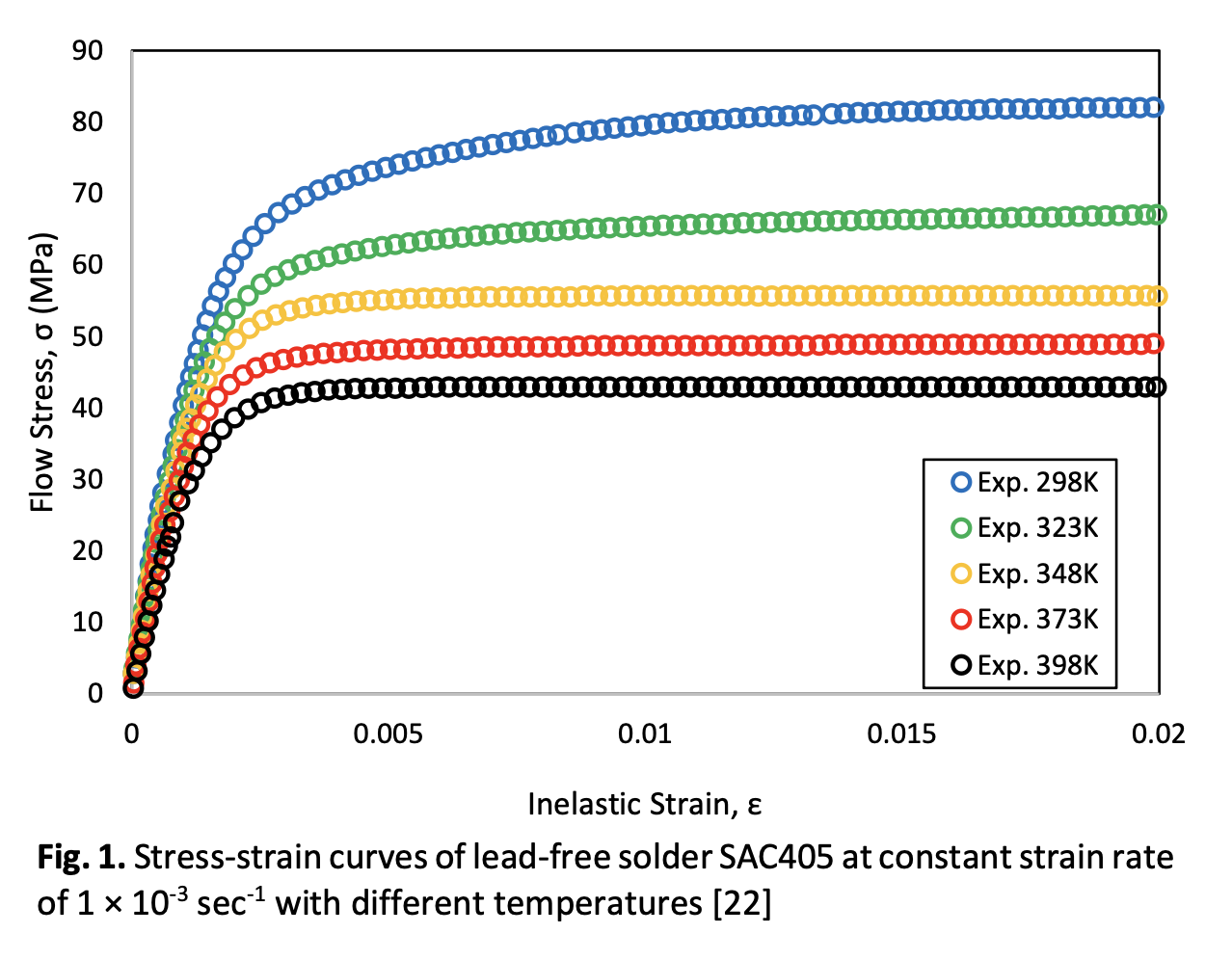Determination of the Anand Parameters for SAC405 Solders Through the Use of Stress-Strain Data
DOI:
https://doi.org/10.37934/aram.113.1.162175Keywords:
Anand model, SAC405, Inelastic Constitutive ModelAbstract
The Anand inelastic constitutive model is commonly employed to depict the deformation behaviour of solders in electronics components. In the Anand model, plasticity and creep are coupled and described by the same set of flow and evolution relations. Using Anand's constitutive model for SAC405 (95.5Sn-4.0Ag-0.5Cu) lead-free solder, the theoretical equations for the solder's creep reaction and the uniaxial stress-strain response were obtained in this paper. The steps to obtain the parameters of Anand model using stress-strain and creep testing were also determined. Data on uniaxial stress and strain at various temperatures (T = 298 K (25 °C), 323 K (50 °C), 348 K (75 °C), 373 K (100 °C), and 398 K (125 °C)) and strain rates (ε̇ = 1 × 10-3 sec-1, 1 × 10-4 sec-1, and 1 × 10-4 sec-1) was used to calculate the Anand parameters. The Anand model's accurateness (goodness of fit) with the retrieved parameters was assessed by comparing the model's findings to the observed creep and stress-strain data. The Anand model consistently generated good predictions of the empirical data in all cases, across a wide range of temperatures and stress-strain levels. The goodness of fit values obtained were 0.852, 0.835 and 0.902 for strain rate 1 × 10-3 sec-1, 1 × 10-4 sec-1 and 1 × 10-5 sec-1 respectively.
Downloads


























